Throughout Earth’s vast history, countless species have risen to prominence only to disappear, leaving behind fossils and traces of their existence. In this article on Incredible Ancient Extinct Animals That Once Roamed Our Planet, we take you on a journey back in time to explore some of the most remarkable creatures that once dominated the planet. From the towering giants of the dinosaur age to the strange and fascinating creatures of the Ice Age, these ancient animals were diverse, powerful, and crucial to their ecosystems.
Each animal in this collection tells a unique story. Whether it’s the swift and deadly Velociraptor, the enormous woolly mammoth, or lesser-known creatures like the bizarre Dunkleosteus—a prehistoric fish with an armored body and powerful jaws—these species shaped the course of evolution long before humans existed. Their adaptations, behaviors, and eventual extinctions provide us with invaluable insights into Earth’s natural history.
As we delve into their past, we also uncover lessons about biodiversity and the fragile nature of life on Earth. Get ready to marvel at the extraordinary array of 57 incredible ancient Extinct animals that once roamed our planet, Earth, and gain a new appreciation for the incredible life forms that shaped the planet’s history.
Introduction
Over 99% of all species that have ever lived on Earth are now extinct. The vast diversity of life that has come and gone serves as a sobering reminder of how fragile ecosystems can be. While many species succumbed to natural processes such as climate change or volcanic eruptions, human activity has played a significant role in more recent extinctions. From large land mammals to tiny ocean creatures, these incredible extinct animals once shaped the world in profound ways. Their stories are vital in promoting conservation efforts to protect current endangered species.
This article will explore 50 incredible extinct animals that once roamed our planet, from prehistoric giants to more recent species wiped out by human activity. Through this journey, we can appreciate the diversity of life that once existed and reflect on the current conservation efforts needed to protect the remaining species.
50+ Ancient Extinct Animals That Once Roamed Our Planet
1. Trilobite
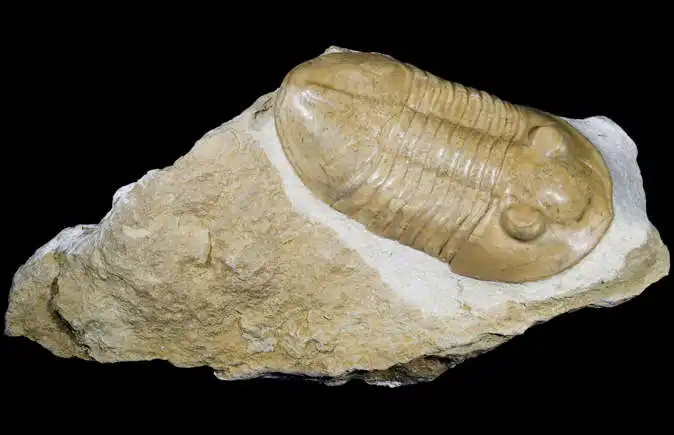
Trilobites are one of the earliest known arthropod groups, first appearing around 520 million years ago. These creatures lived in the ocean, and their fossilized remains are found worldwide. Trilobites had hard exoskeletons and segmented bodies, which helped protect them from predators. With more than 20,000 species identified, they survived for over 250 million years before going extinct in a mass extinction event.
Their long existence compared to humankind, which has only been around for a fraction of that time, reminds us of the incredible longevity some species once had on Earth.
2. Dimetrodon
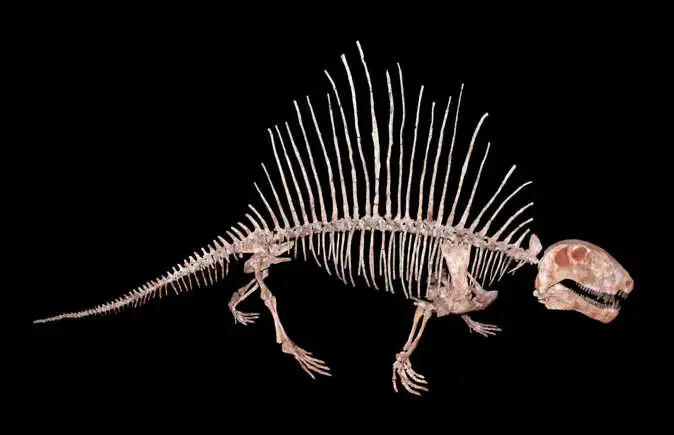
Dimetrodon lived between 286 and 270 million years ago, long before dinosaurs appeared. This prehistoric predator inhabited swampy areas in what is now North America and Europe. Its most notable feature was a large sail-like structure on its back, which may have helped regulate body temperature.
Dimetrodon was about 11.5 feet long and had a powerful build that allowed it to prey on smaller animals. Its fossils provide a fascinating glimpse into life before the age of dinosaurs, showcasing the diversity of life forms that existed in the Permian period.
3. Dunkleosteus
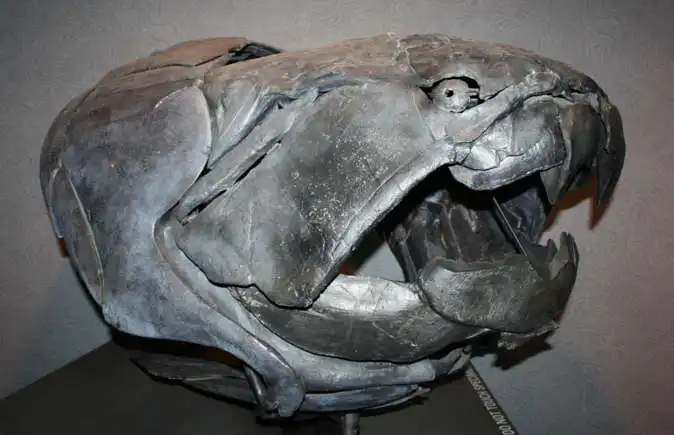
Dunkleosteus was a massive fish that dominated the oceans between 358 and 382 million years ago. Growing up to 33 feet in length, this armored fish had a large, bony head and sharp bony plates instead of teeth. Dunkleosteus was a formidable predator that hunted sharks and even other members of its species.
Fossils discovered in North America, Europe, and Morocco reveal that this fearsome fish had a global presence during its reign. As one of the earliest jawed vertebrates, Dunkleosteus played a crucial role in the evolutionary history of marine life.
4. Mosasaurus
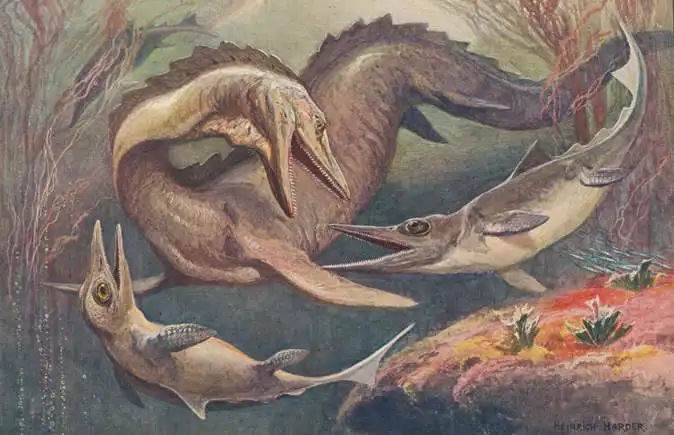
Mosasaurus was a marine reptile that lived about 70 million years ago, during the Late Cretaceous period. These formidable predators grew up to 56 feet long and had powerful jaws filled with sharp teeth. Mosasaurus fossils, primarily found in Europe and North America, show its adaptation to a marine lifestyle, with a streamlined body and paddle-like limbs.
This apex predator ruled the ancient seas, hunting large fish and other marine reptiles. Its impressive size and ferocity make Mosasaurus one of the most iconic extinct marine creatures.
5. Quetzalcoatlus
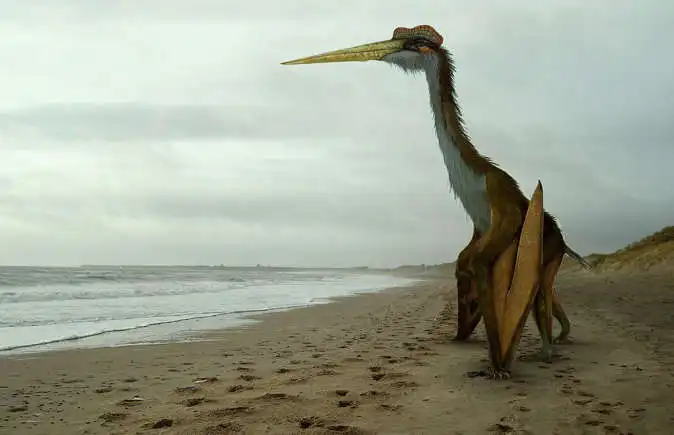
Quetzalcoatlus was one of the largest flying animals ever to exist, with a wingspan of over 30 feet. It lived during the Late Cretaceous period, around 70-65 million years ago, and soared over what is now North America. Fossils of Quetzalcoatlus have been found in Texas, offering valuable insights into the biology and flight mechanics of these gigantic pterosaurs.
Despite their size, Quetzalcoatlus was likely a graceful flyer, gliding over vast distances in search of food. Its discovery revolutionized our understanding of prehistoric flying creatures.
6. Pteranodon
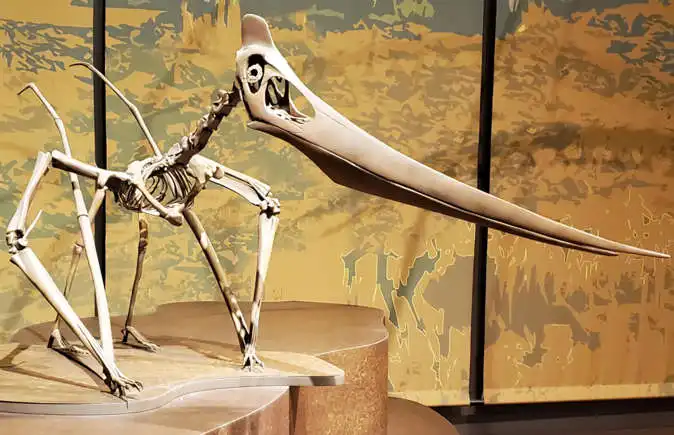
Pteranodon was a genus of pterosaurs that lived around 90-100 million years ago during the Cretaceous period. With wingspans of over 23 feet, these flying reptiles were some of the most impressive airborne predators of their time. Pteranodon had long, toothless beaks, which helped them snatch fish from the water as they flew over the ancient seas.
Fossils found in Kansas have provided valuable information about their flight capabilities and behavior. While not directly related to modern birds, Pteranodon shares some similarities with today’s avian species.
7. Tyrannosaurus Rex
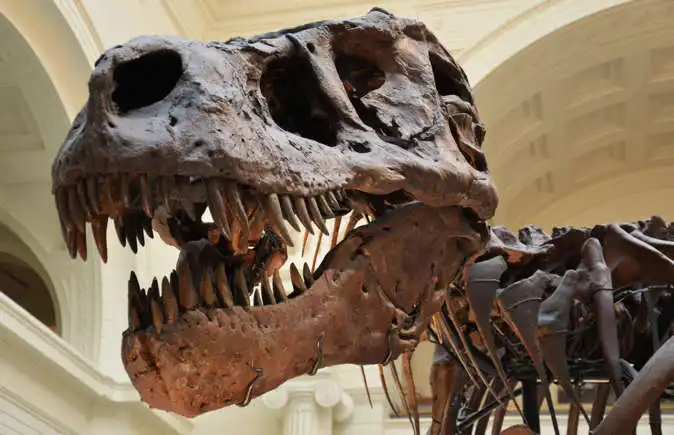
Tyrannosaurus Rex, often referred to as T. Rex, is arguably the most famous dinosaur. This massive carnivore lived around 66 million years ago during the Late Cretaceous period. T. Rex stood over 12 feet tall and could reach lengths of 40 feet, making it one of the largest land predators of its time.
Its powerful jaws were capable of crushing bones, allowing it to dominate the food chain. Despite its small arms, T. Rex was an efficient hunter, and its fossils provide crucial insights into the behavior and biology of theropod dinosaurs.
8. Triceratops
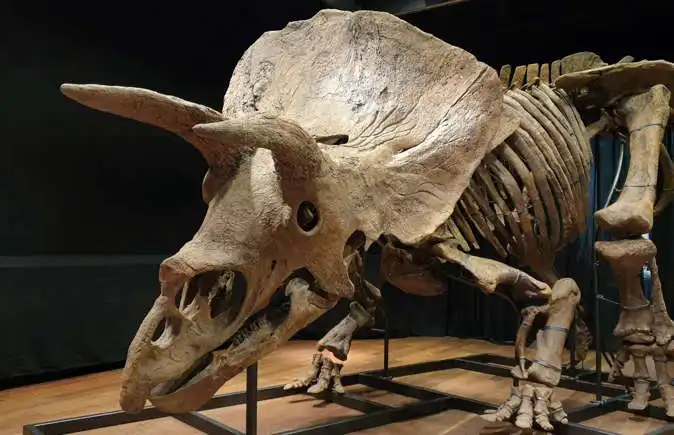
Triceratops was a herbivorous dinosaur that lived around 68-66 million years ago in what is now North America. It had a large bony frill at the back of its head and three prominent facial horns, which likely served as a defense mechanism against predators like T. Rex. Triceratops grew up to 30 feet long and weighed several tons.
Fossils of this dinosaur have been found in abundance, making it one of the best-known dinosaurs. Triceratops likely lived in herds, similar to modern rhinoceroses, and its fossils offer a window into the plant-eating dinosaurs of the Late Cretaceous.
9. Megalodon
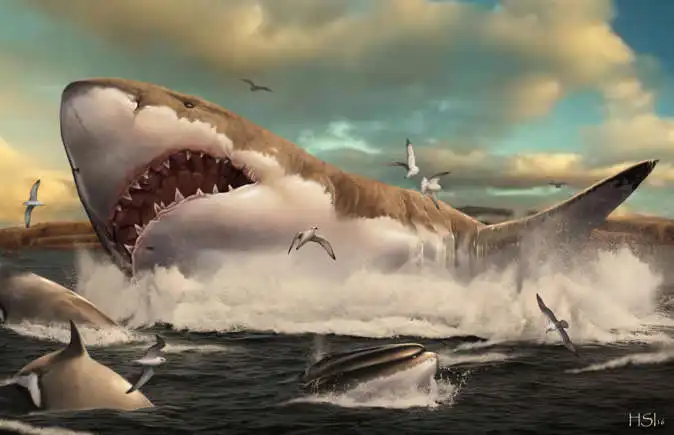
Megalodon, a giant prehistoric shark, lived from about 23 to 3.6 million years ago and swam in oceans worldwide. It reached lengths of up to 60 feet and preyed on large marine animals such as whales. Megalodon’s massive teeth, some the size of a human hand, are often found in marine sediments and are a testament to the shark’s formidable presence.
Its powerful jaws could exert incredible force, enabling it to take down even the largest prey. Megalodon’s extinction marked the end of one of the most dominant predators in ocean history.
10. Homo Neanderthalensis

Neanderthals, or Homo neanderthalensis, were close relatives of modern humans, living in Europe and western Asia from about 400,000 to 40,000 years ago. They were shorter, stockier, and had larger skulls compared to modern humans.
Neanderthals are known for their advanced tools, use of fire, and social structures. Archaeological evidence suggests that Neanderthals and Homo sapiens interacted and even interbred. Despite their impressive adaptability, Neanderthals eventually went extinct, possibly due to competition with early modern humans or changing environmental conditions.
11. Diprotodon
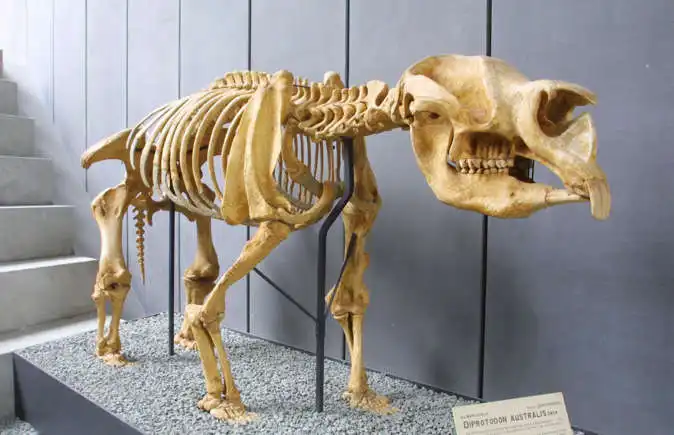
Diprotodon was the largest marsupial to ever walk the Earth, living in Australia from about 1.6 million to 46,000 years ago. These massive creatures resembled oversized wombats and could grow as large as a rhinoceros.
Diprotodons were herbivores and lived in the forests and grasslands of ancient Australia. Fossil evidence suggests that they may have lived in herds, and their extinction is likely linked to a combination of human hunting and climate change. Their disappearance marked the end of the megafauna era in Australia.
12. Glyptodon
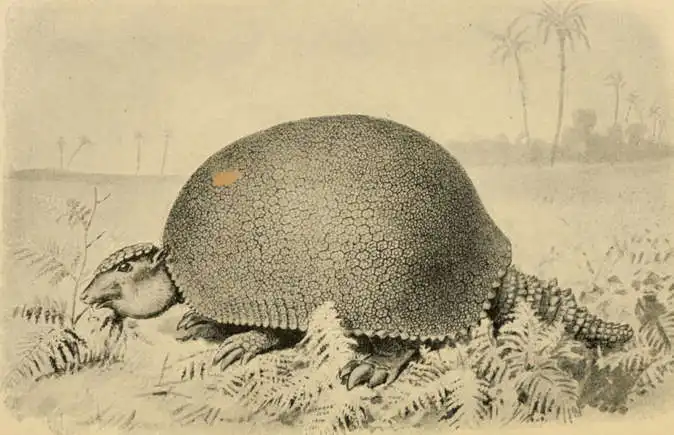
Glyptodon was a prehistoric relative of modern armadillos, living in South America until about 10,000 years ago. These massive creatures could weigh up to 2,000 pounds and were protected by a large, domed shell. Glyptodons were herbivores, feeding on plants and grasses, and their tough armor helped shield them from predators.
Fossils of Glyptodon have been found in Argentina and Brazil, providing insight into the unique adaptations of these ancient armored mammals. Their extinction is thought to have been driven by human hunting and changing environmental conditions.
13. American Lion
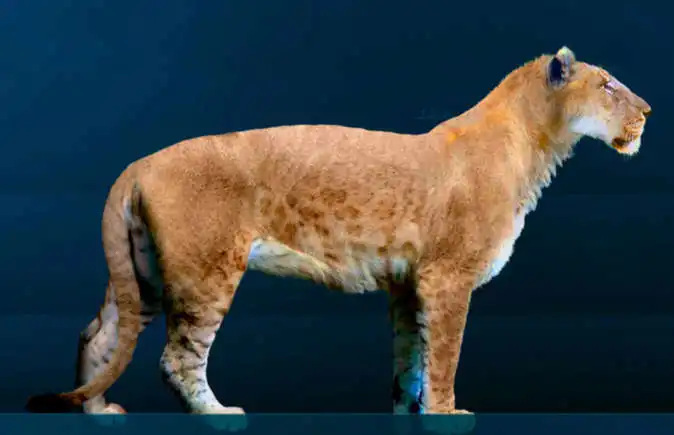
The American lion, or Panthera atrox, was one of the largest cats to ever exist, living in North America during the Pleistocene epoch. Standing about four feet at the shoulder and weighing up to 1,000 pounds, the American lion was larger than today’s African lions.
Fossils found in the La Brea Tar Pits in Los Angeles show that these predators hunted large herbivores, such as bison and mammoths. The American lion’s extinction occurred around 11,000 years ago, possibly due to a combination of climate change and human activity.
14. Smilodon
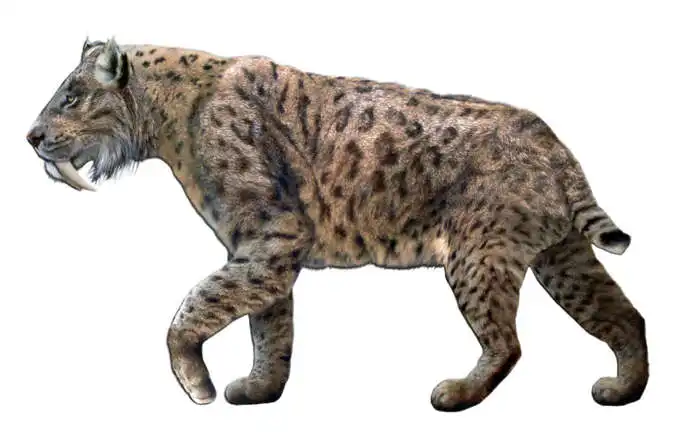
Smilodon, commonly known as the saber-toothed cat, lived in the Americas from around 2.5 million to 10,000 years ago. Famous for its long, curved saber-like teeth, Smilodon was a fearsome predator. Weighing up to 620 pounds, it had powerful forelimbs and was likely an ambush predator, taking down large prey like bison and camels.
Fossils of Smilodon have been found in abundance at the La Brea Tar Pits, giving researchers valuable insight into its life and behavior. Despite its fearsome appearance, Smilodon went extinct due to changing climates and loss of prey.
15. Mastodon
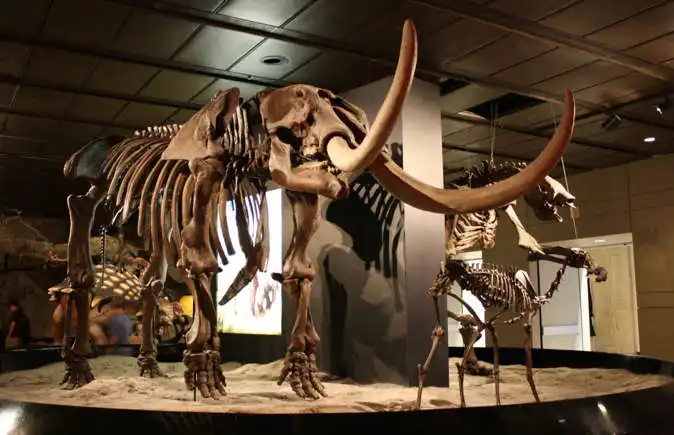
Mastodons were prehistoric relatives of modern elephants, roaming North and Central America from around 27 million to 10,000 years ago. These large, shaggy creatures stood about 10 feet tall and had long, curved tusks. Unlike mammoths, which grazed on grasses, mastodons were browsers, feeding on shrubs and trees.
Fossils of mastodons have been found in many parts of North America, including New York and California. Their extinction is believed to have been caused by a combination of human hunting and climate change at the end of the last Ice Age.
16. Dodo
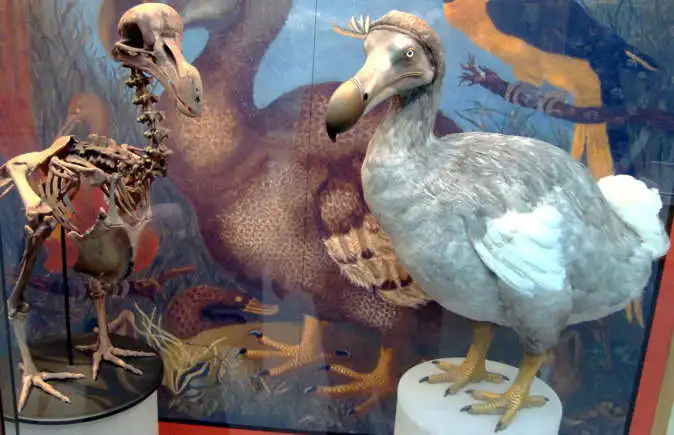
The dodo (Raphus cucullatus) was a flightless bird native to Mauritius, an island in the Indian Ocean. It went extinct in the late 17th century due to a combination of human hunting and the introduction of invasive species like rats and pigs, which ate its eggs. Dodos were about 3 feet tall and weighed up to 40 pounds, making them easy prey for sailors and other predators. Since the dodo had no natural predators before humans arrived, it was not afraid of them, contributing to its rapid extinction. Today, the dodo is a symbol of human-caused extinction.
17. Woolly Mammoth
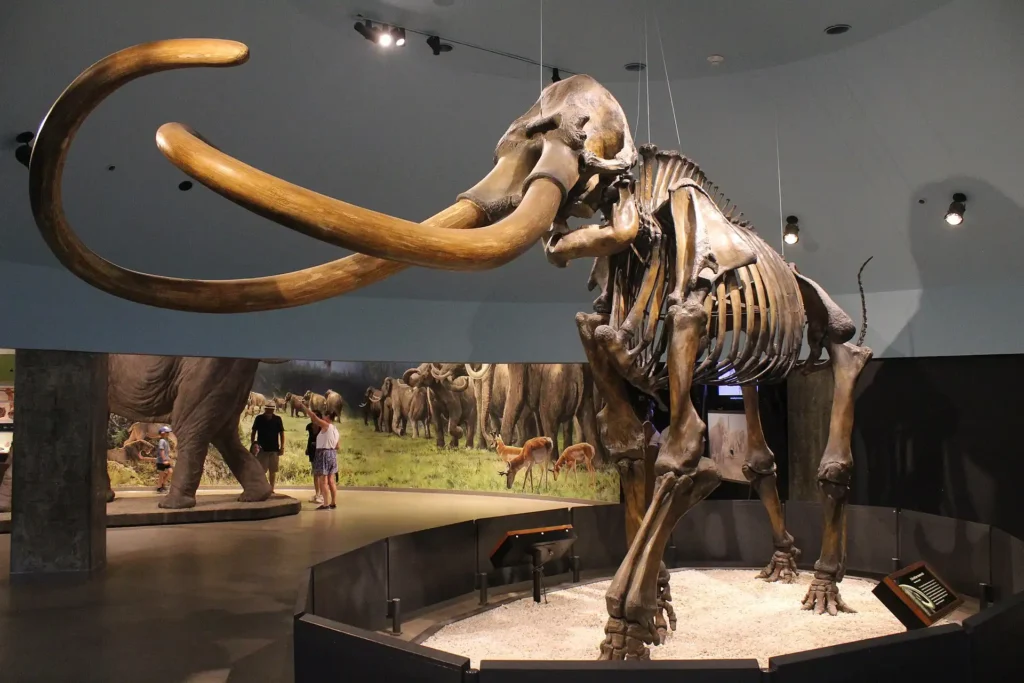
The woolly mammoth (Mammuthus primigenius) roamed the Earth during the Ice Age, thriving in the cold tundra of Europe, Asia, and North America. These large, shaggy-haired relatives of modern elephants were known for their long, curved tusks, which helped them dig through snow to find vegetation.
Woolly mammoths were well-adapted to cold environments, but as the climate warmed and human hunting increased, they became extinct around 4,000 years ago. Fossils of woolly mammoths have been found across the Northern Hemisphere, and scientists are even exploring the possibility of cloning them using preserved DNA.
18. Passenger Pigeon
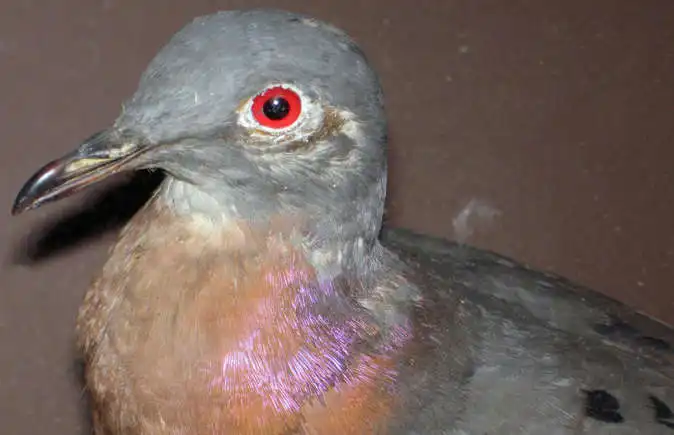
Once the most numerous bird in North America, the passenger pigeon (Ectopistes migratorius) flew in flocks so large they could darken the sky. However, by the early 20th century, the passenger pigeon was extinct due to overhunting and habitat destruction.
In the 19th century, these birds were hunted on a massive scale for food and sport, leading to a rapid decline in their population. The last known passenger pigeon, named Martha, died in captivity in 1914. Their extinction serves as a stark reminder of the impact human activities can have on wildlife populations.
19. Thylacine (Tasmanian Tiger)
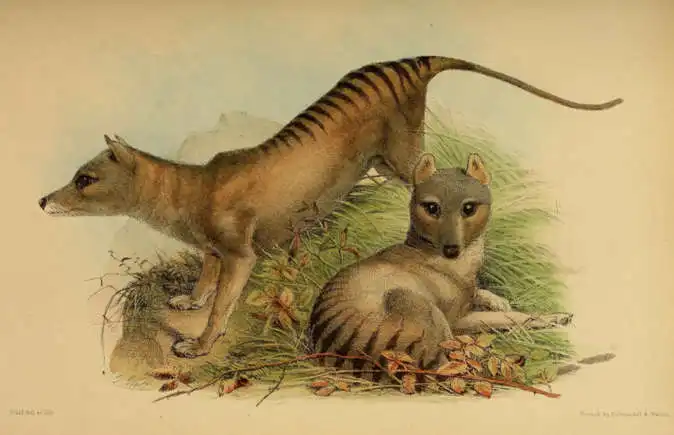
The thylacine (Thylacinus cynocephalus), commonly known as the Tasmanian tiger, was a carnivorous marsupial native to Australia, Tasmania, and New Guinea. It resembled a large dog with tiger-like stripes on its back.
Thylacines were apex predators, hunting kangaroos and small mammals. European settlers in Tasmania hunted the thylacine to extinction in the 20th century, fearing it was a threat to livestock. The last known thylacine died in captivity in 1936. Today, it remains one of the most iconic examples of modern human-driven extinction.
20. Great Auk
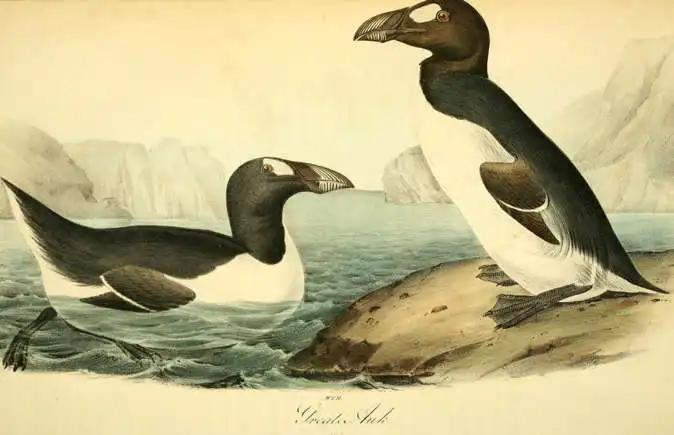
The great auk (Pinguinus impennis) was a flightless bird that lived in the North Atlantic, including the coasts of Canada, Greenland, Iceland, and Scotland. Standing about 30 inches tall, the great auk was an adept swimmer and used its strong wings to propel itself underwater.
Sadly, the bird was hunted to extinction in the mid-19th century for its feathers, meat, and oil. The last confirmed sighting of a great auk was in 1844. Fossils and accounts from explorers give us insight into the life of this once-abundant bird.
21. Steller’s Sea Cow
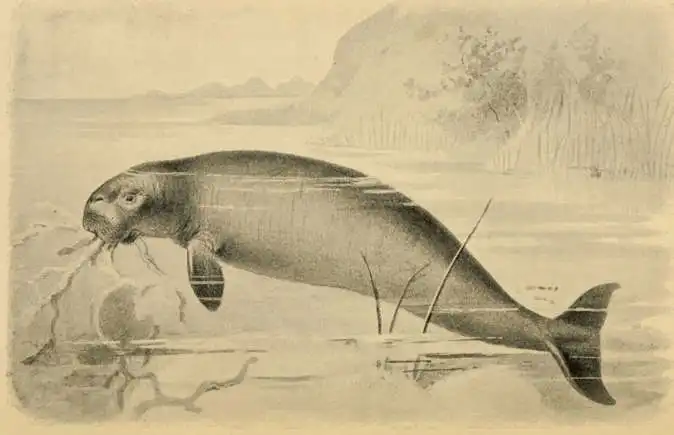
Steller’s sea cow (Hydrodamalis gigas) was a large marine mammal that lived in the cold waters of the Bering Sea. It was discovered by European explorers in the 18th century and was named after the naturalist Georg Wilhelm Steller.
These gentle giants could grow up to 30 feet long and weighed around 10 tons. Steller’s sea cow fed on kelp and other sea plants, but within 27 years of its discovery, it was hunted to extinction by fur traders seeking its blubber and hide. Its rapid extinction highlights the fragility of species exposed to human exploitation.
22. Irish Elk
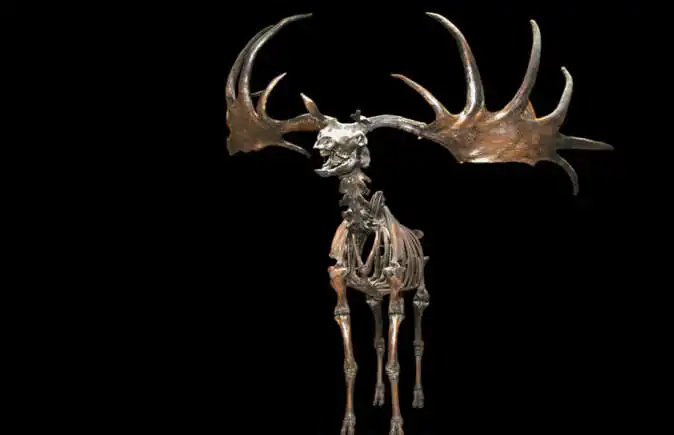
The Irish elk (Megaloceros giganteus) was one of the largest deer species to have ever lived, with males sporting antlers that spanned up to 12 feet across. This prehistoric herbivore roamed Europe and Asia during the Pleistocene epoch and went extinct around 7,700 years ago.
Despite its name, the Irish elk was not exclusive to Ireland but was named for the numerous fossils found there. The reasons for its extinction are still debated, with factors such as climate change and hunting by early humans likely playing a role.
23. Pinta Island Tortoise
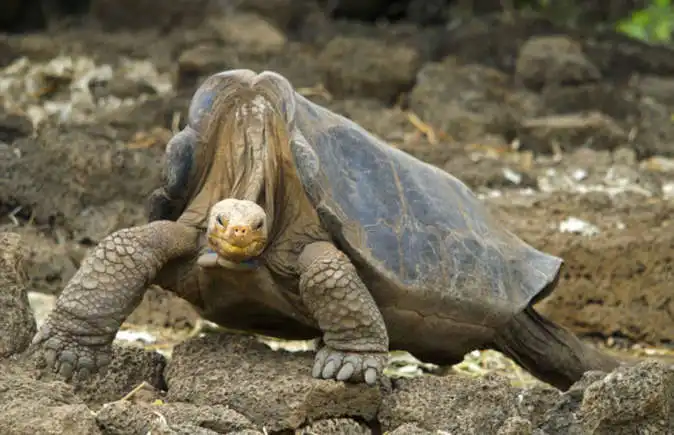
The Pinta Island tortoise (Chelonoidis abingdonii) was a species of giant tortoise native to the Galápagos Islands. The most famous Pinta Island tortoise was Lonesome George, who was discovered in 1971 and was the last known individual of his species.
Despite conservation efforts, no other Pinta Island tortoises were found, and George’s death in 2012 marked the extinction of the species. The decline of the Pinta Island tortoise was largely due to overhunting and the introduction of non-native animals, such as goats, which destroyed their habitat.
24. Carolina Parakeet
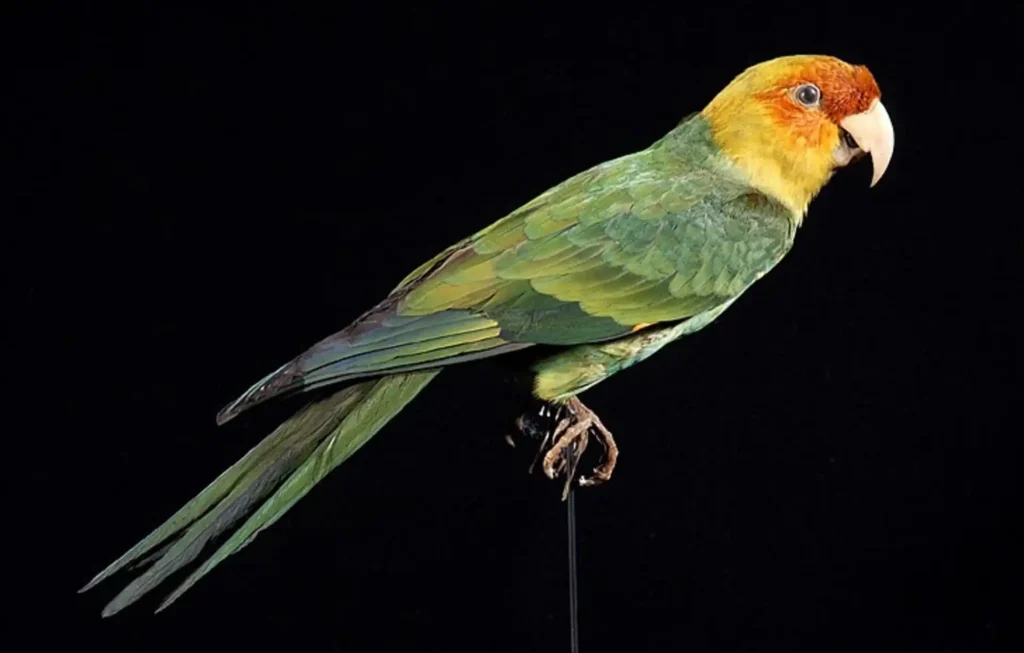
The Carolina parakeet (Conuropsis carolinensis) was the only native parrot species in the United States. It was found in forests and swamps from the Midwest to the eastern seaboard. Unfortunately, the colorful bird went extinct in the early 20th century due to deforestation, hunting for its feathers, and the spread of diseases from domesticated birds.
The last known Carolina parakeet died in captivity in 1918. Its extinction marked the loss of one of the most vibrant members of North America’s avian fauna.
25. Cave Lion
The cave lion (Panthera spelaea), also known as the Eurasian cave lion, was a large predator that roamed Europe and Asia during the Pleistocene epoch. It was one of the largest lions to have ever lived, with males weighing up to 800 pounds.
Cave lions were likely apex predators, hunting large herbivores such as reindeer, bison, and young mammoths. Their extinction around 13,000 years ago may have been driven by climate change, habitat loss, and competition with early humans for food.
26. Moa
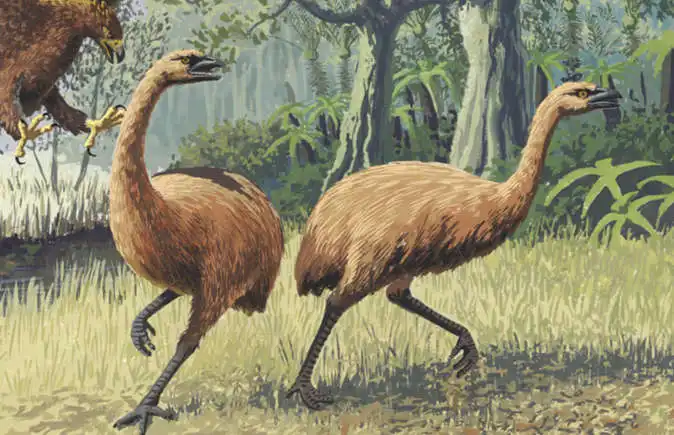
Moas were large, flightless birds native to New Zealand, with some species standing up to 12 feet tall. There were nine species of moa, and they were the dominant herbivores in New Zealand’s forests and grasslands.
Moas went extinct around 600 years ago due to overhunting by the indigenous Māori people. With no natural predators before humans arrived, they were an easy target. Their extinction had a significant impact on New Zealand’s ecosystem, as moas played a crucial role in seed dispersal and vegetation management.
27. Saber-Toothed Salmon
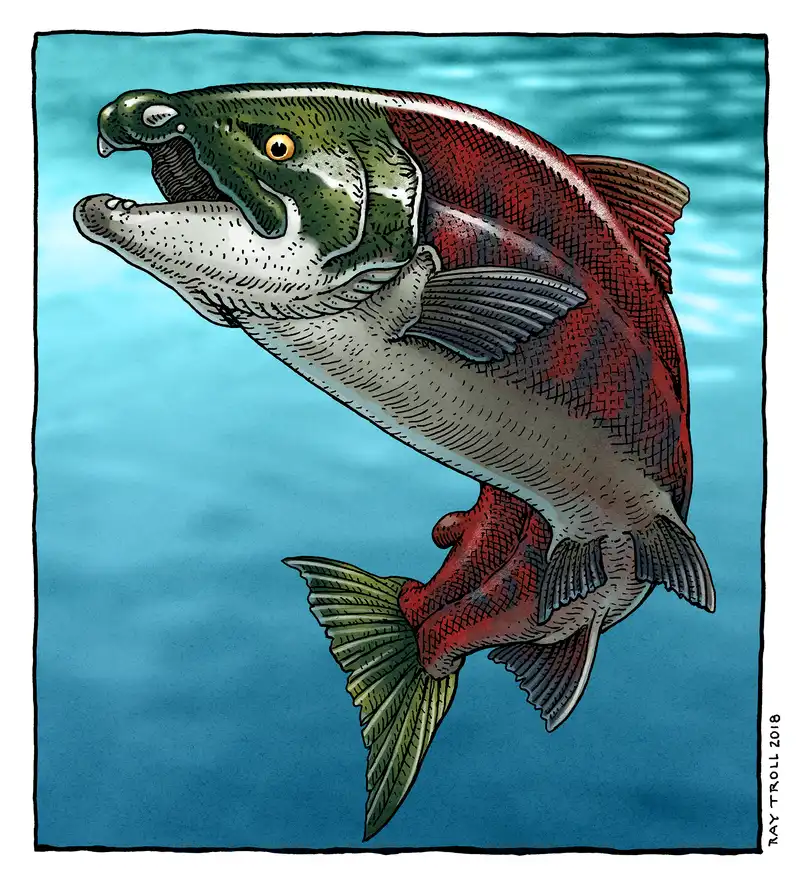
The saber-toothed salmon (Oncorhynchus rastrosus) was a prehistoric fish that lived along the Pacific coast of North America during the Miocene and Pliocene epochs. It grew up to 9 feet long and had distinctive saber-like teeth, which were likely used for display or combat rather than hunting.
Saber-toothed salmon are believed to have gone extinct around 5 million years ago, possibly due to changing oceanic conditions. Their fossils offer a glimpse into the unique adaptations of ancient marine life.
28. Haast’s Eagle
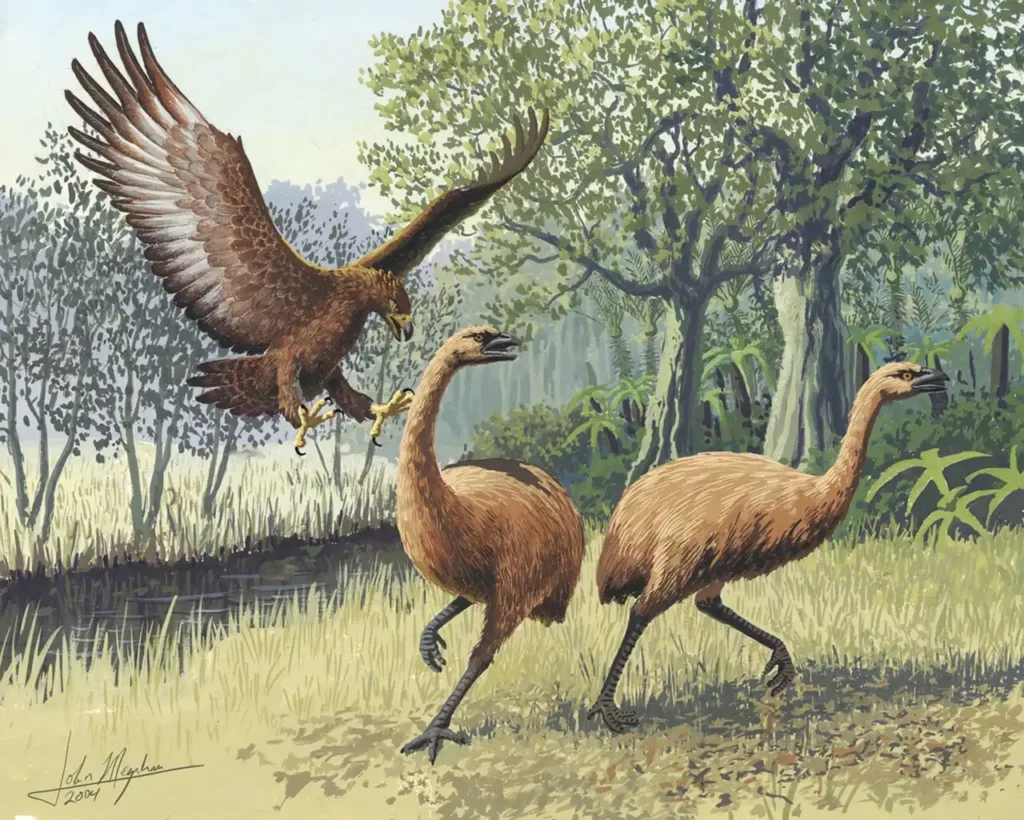
Haast’s eagle (Hieraaetus moorei) was the largest eagle to have ever lived, with a wingspan of up to 10 feet. It inhabited the South Island of New Zealand and preyed on large flightless birds such as moas.
Haast’s eagle was a formidable predator, capable of taking down animals much larger than itself. However, when moas were hunted to extinction by humans, Haast’s eagle also disappeared, as its primary food source was gone. The eagle’s extinction occurred around 1400 AD, making it one of the more recent losses in Earth’s natural history.
29. Pyrenean Ibex
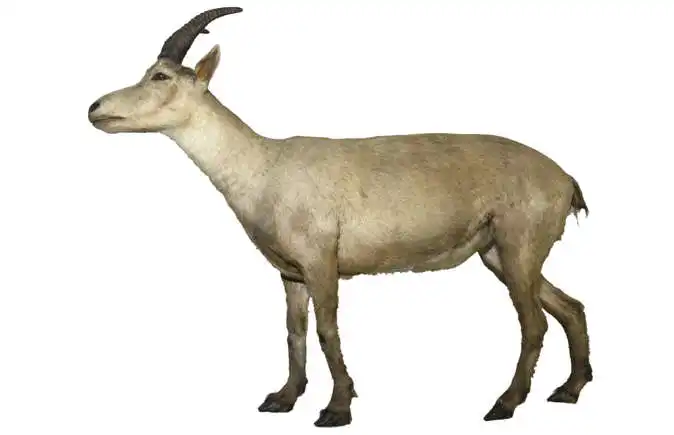
The Pyrenean ibex (Capra pyrenaica pyrenaica) was a species of wild goat that lived in the Pyrenees mountains between France and Spain. The species was driven to extinction in the wild in 2000, with the last known individual, a female named Celia, dying after being crushed by a falling tree.
In 2003, scientists attempted to clone the Pyrenean ibex using preserved DNA, and while the clone was born, it died shortly after birth due to lung defects. This marked the first time a species had been resurrected, albeit briefly, through cloning.
30. Baiji (Chinese River Dolphin)
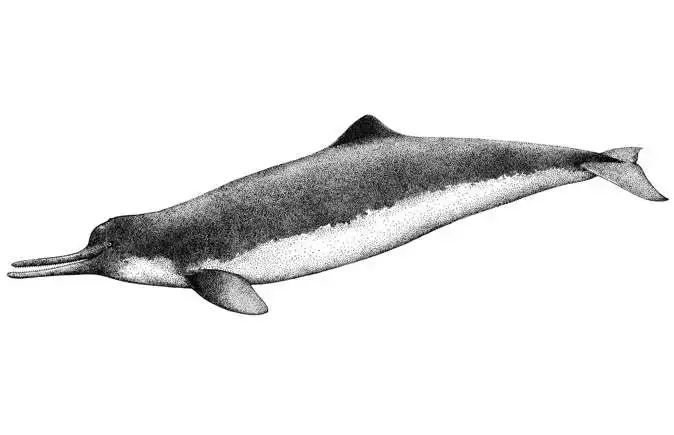
The Baiji (Lipotes vexillifer), also known as the Chinese river dolphin, was a freshwater dolphin native to the Yangtze River in China. It was declared functionally extinct in 2006, following decades of habitat degradation, pollution, and entanglement in fishing gear.
The Baiji was highly sensitive to environmental changes, and the rapid industrialization of the Yangtze River basin drastically reduced its population. Despite efforts to locate any surviving individuals, none have been found, making the Baiji the first dolphin species to go extinct due to human activities.
31. Schomburgk’s Deer
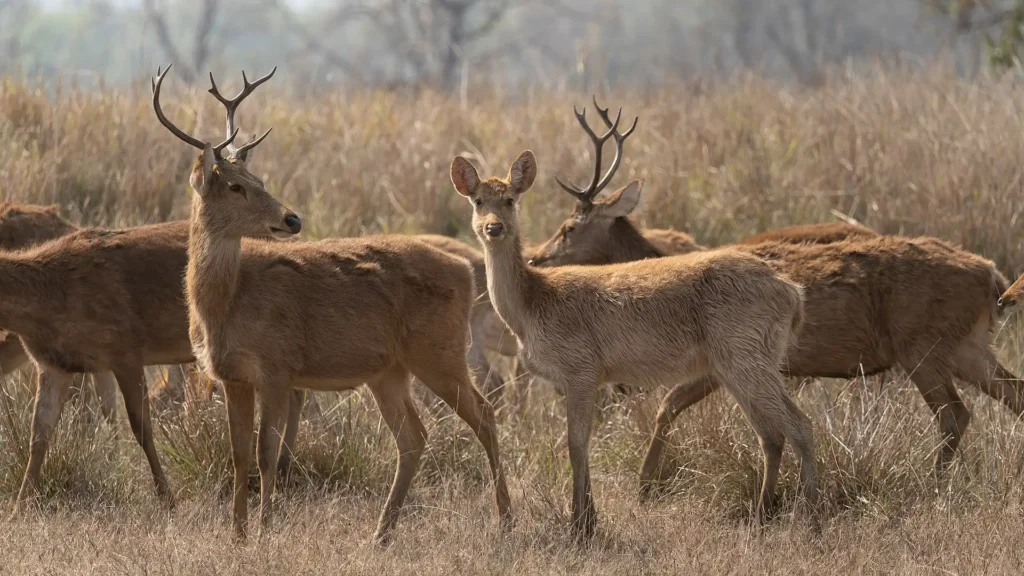
Schomburgk’s deer (Rucervus schomburgki) was a species of deer native to Thailand. It was named after Sir Robert H. Schomburgk, a British consul to Thailand in the 19th century. The species lived in swampy grasslands, where it grazed on vegetation. Schomburgk’s deer was hunted to extinction in the early 20th century, with the last known individual reportedly killed in 1938.
Habitat destruction and overhunting were the main factors leading to its extinction. In 2006, antlers thought to be from the last of the species were rediscovered in a Chinese medicine shop.
32. Bluebuck
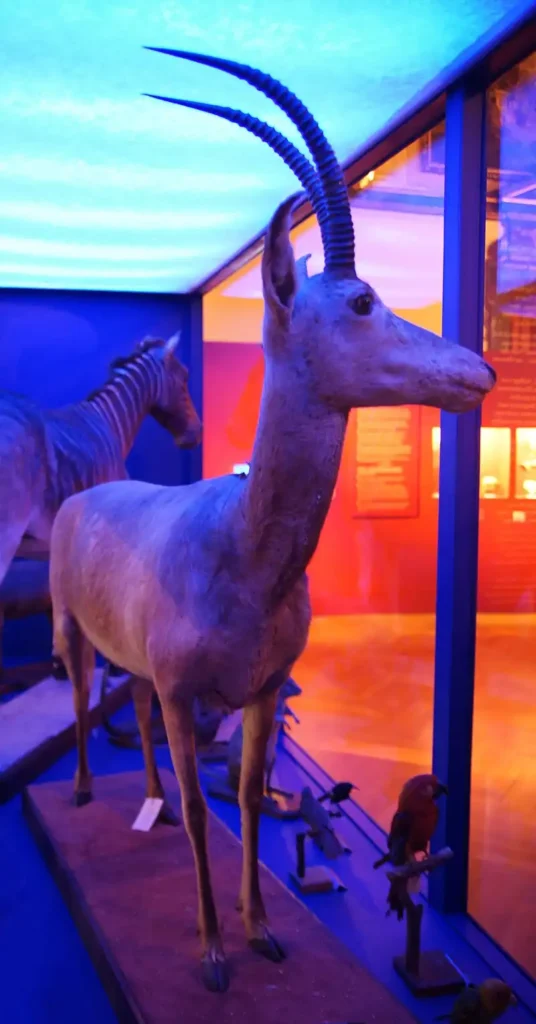
The bluebuck (Hippotragus leucophaeus) was a species of antelope that roamed the grasslands of South Africa. It was named for its bluish-gray coat, which distinguished it from other antelopes. The bluebuck was hunted to extinction in the early 19th century, with the last confirmed sighting in 1800.
The species was never particularly abundant, and its limited range, coupled with European settlers’ hunting practices, led to its rapid decline. Only a few bluebuck specimens exist in museums today, giving us a glimpse into this once-unique species.
33. Japanese Sea Lion
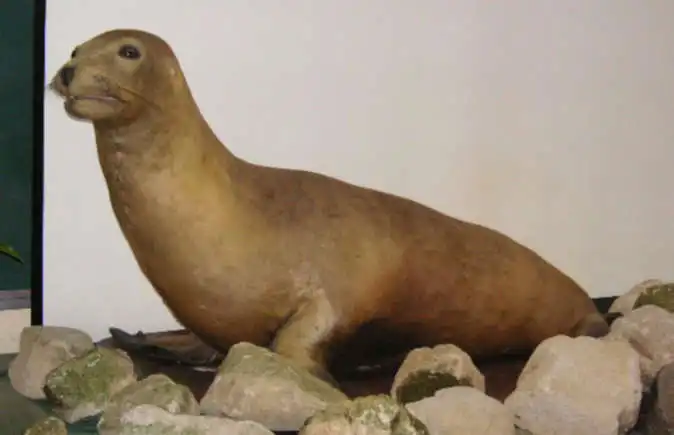
The Japanese sea lion (Zalophus japonicus) was once widespread along the coasts of Japan, Korea, and the Russian Far East. This pinniped species was similar in appearance to the California sea lion but slightly smaller. It was heavily hunted for its oil, fur, and body parts, which were used in traditional medicine.
By the 1950s, the Japanese sea lion was declared extinct due to overhunting, habitat loss, and competition with fisheries. Some researchers believe there may still be small populations in remote areas, but no confirmed sightings have been reported.
34. Caribbean Monk Seal
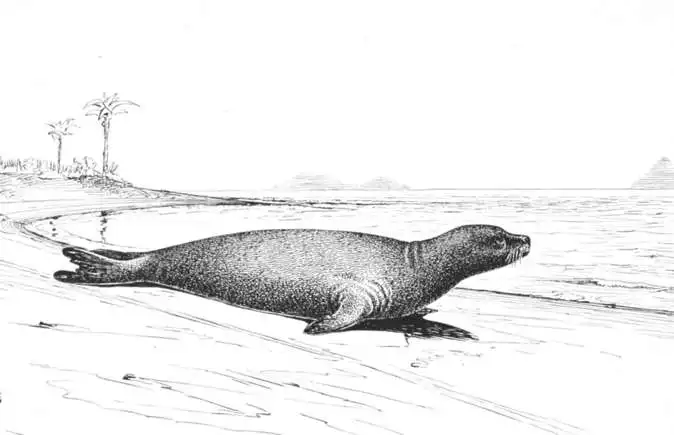
The Caribbean monk seal (Neomonachus tropicalis) was the only seal native to the Caribbean Sea and the Gulf of Mexico. It was known for its sleek, dark coat and gentle nature. Sadly, the species was hunted extensively by European settlers for its oil, meat, and skin.
By the early 20th century, the population had dwindled to critically low levels, and the last confirmed sighting occurred in the 1950s. In 2008, the species was officially declared extinct. The extinction of the Caribbean monk seal serves as a reminder of the vulnerability of marine mammals to human exploitation.
35. Quagga
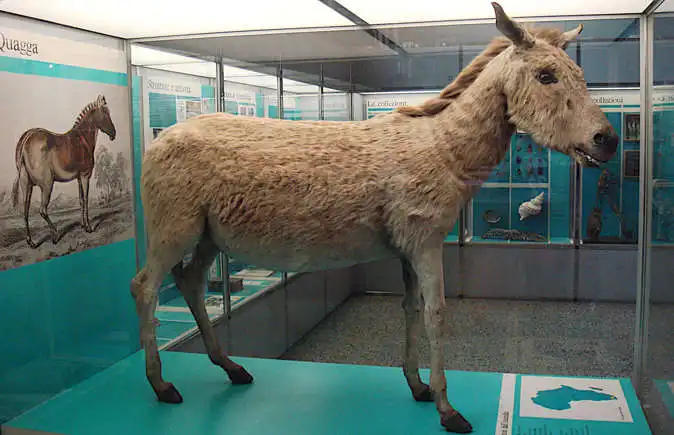
The quagga (Equus quagga quagga) was a unique subspecies of the plains zebra, distinguished by its partial striping on the front half of its body and a solid brown rear. Quaggas lived in South Africa and were hunted to extinction in the 19th century for their meat, hides, and to make way for livestock.
The last known quagga died in a zoo in Amsterdam in 1883. Interestingly, the Quagga Project in South Africa is attempting to “revive” the quagga through selective breeding of plains zebras that display quagga-like traits.
36. Bali Tiger
The Bali tiger (Panthera tigris balica) was the smallest of the tiger subspecies, native to the Indonesian island of Bali. The tiger was driven to extinction in the 1930s due to hunting and habitat loss caused by human expansion. Bali’s dense forests were cleared for agriculture, which dramatically reduced the tiger’s prey base.
The last confirmed Bali tiger was shot in 1937, and no efforts were made to conserve the species before its extinction. Today, the Bali tiger exists only in museum specimens and historical records.
37. Western Black Rhinoceros
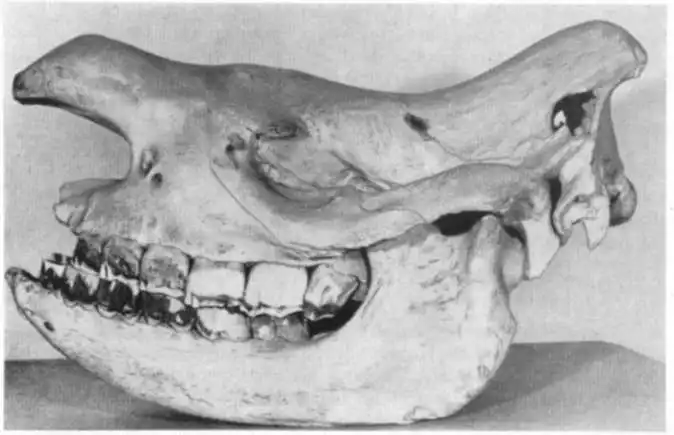
The western black rhinoceros (Diceros bicornis longipes) was a subspecies of the black rhinoceros that once roamed Central and West Africa. Poaching for its valuable horns, used in traditional medicine and as a status symbol, led to its extinction in the wild.
By the late 20th century, conservation efforts were in place, but it was too late for the western black rhinoceros. The species was declared extinct in 2011, marking the loss of another African megafauna species due to illegal wildlife trade and habitat destruction.
38. Falkland Islands Wolf
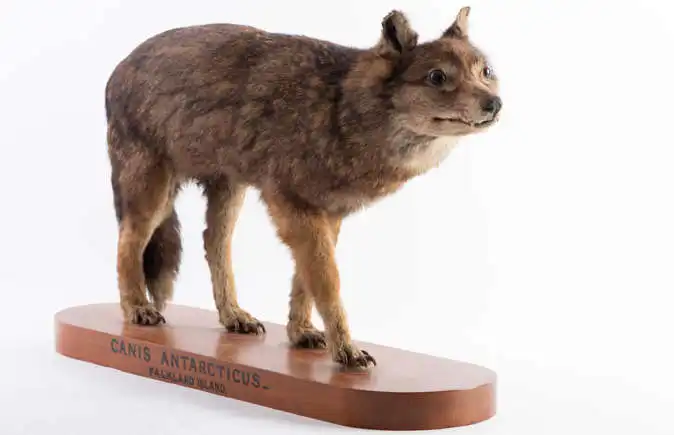
The Falkland Islands wolf (Dusicyon australis), also known as the warrah, was the only native land mammal of the Falkland Islands, located off the coast of Argentina. The species resembled a small fox and was hunted to extinction by European settlers in the 19th century.
The Falkland Islands wolf was often killed because settlers feared it posed a threat to their sheep. The last known individual died in 1876. The extinction of the Falkland Islands wolf is significant as it represents the only canid species to be driven to extinction in modern times.
39. Arabian Ostrich
The Arabian ostrich (Struthio camelus syriacus) was a subspecies of the common ostrich that lived in the Arabian Peninsula and parts of the Middle East. It thrived in desert regions and was once an important animal in the ecosystem. However, the Arabian ostrich was hunted extensively for its feathers, meat, and eggs, leading to its decline.
By the mid-20th century, the species was extinct, with the last confirmed sighting in 1966. The Arabian ostrich’s disappearance contributed to the decline of many predator species that relied on it for food.
40. Toolache Wallaby
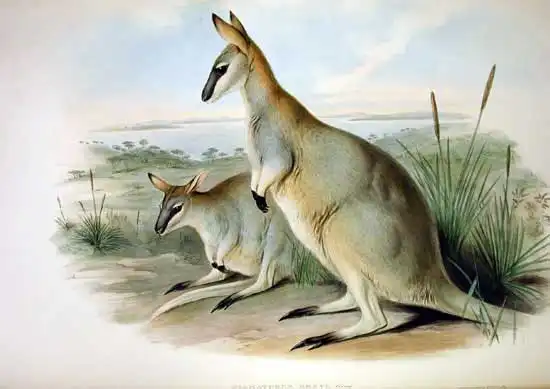
, Public domain, via Wikimedia Commons
The toolache wallaby (Macropus greyi) was once found in southeastern Australia, living in grassy plains and woodlands. It was known for its graceful movements and delicate appearance. The species began to decline rapidly in the 19th century due to hunting for its fur and competition with introduced species like rabbits and livestock.
Habitat destruction also played a role in its extinction, with the last known sighting occurring in the 1920s. The toolache wallaby’s extinction highlights the impact of human activities on Australia’s unique fauna.
41. Malagasy Hippopotamus
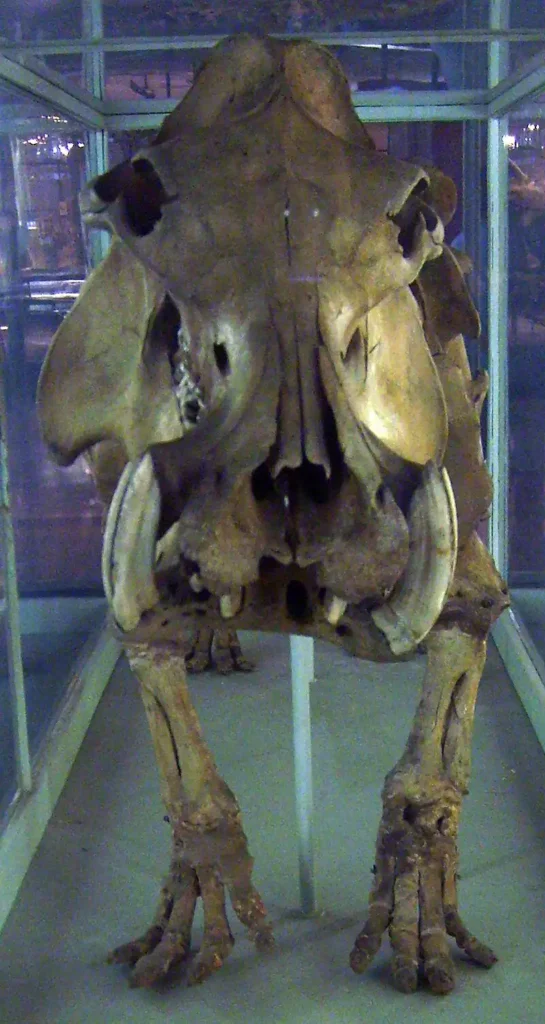
The Malagasy hippopotamus refers to a group of three species of dwarf hippos that once inhabited the island of Madagascar. These hippos were smaller than their African relatives and were well-adapted to the island’s unique environment. They likely went extinct around 1,000 years ago, coinciding with the arrival of humans on Madagascar.
The hippos were hunted and their habitat altered by human activities, leading to their decline. Fossils of the Malagasy hippos have provided valuable insight into the island’s prehistoric ecosystem.
42. Tarpan
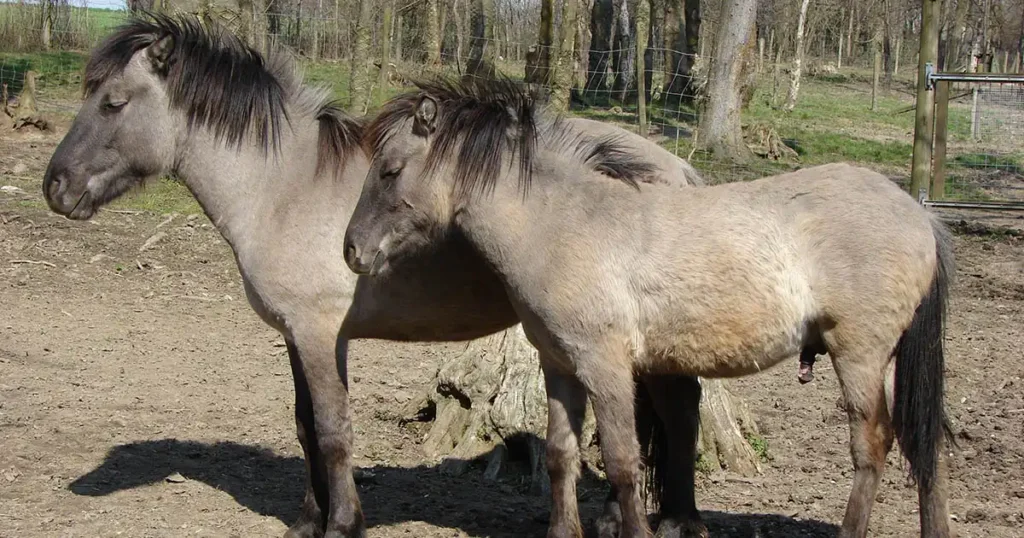
The tarpan (Equus ferus ferus) was a wild horse native to the steppes of Eastern Europe. It played a significant role in the culture and folklore of many ancient civilizations. The tarpan was hunted to extinction in the wild by the late 19th century, with the last individual dying in captivity in Russia in 1909.
Efforts to recreate the tarpan through selective breeding of domestic horses have produced animals that resemble the extinct species, but the true genetic lineage of the tarpan is lost.
43. Guam Kingfisher
The Guam kingfisher (Todiramphus cinnamominus) is a critically endangered bird species native to the island of Guam in the Pacific Ocean. Though not entirely extinct, it has been extinct in the wild since the 1980s due to the introduction of the invasive brown tree snake, which decimated Guam’s native bird populations.
Today, the Guam kingfisher survives only in captivity, where breeding programs aim to increase its numbers in the hope of reintroducing it to its native habitat. However, challenges remain due to the ongoing presence of the brown tree snake on the island.
44. Xerces Blue Butterfly
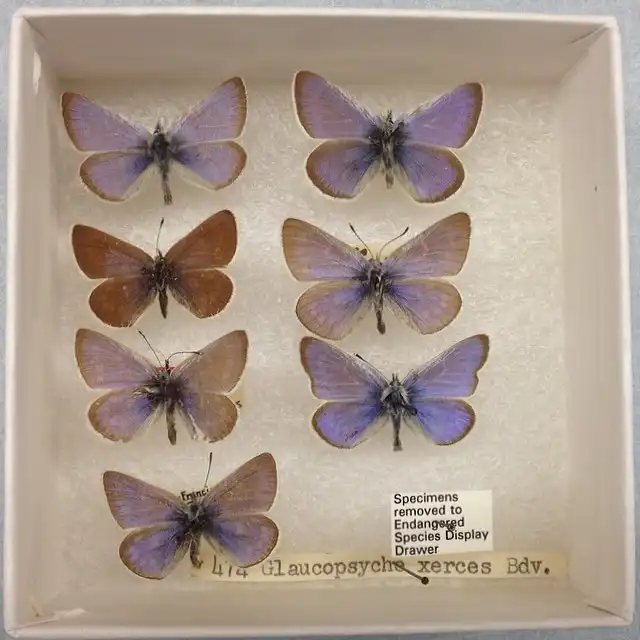
The Xerces blue butterfly (Glaucopsyche xerces) was native to the coastal sand dunes of the San Francisco Peninsula in California. It was a small, striking butterfly with iridescent blue wings. Habitat destruction due to urbanization in the San Francisco area, combined with the loss of its host plants, led to the extinction of the Xerces blue in the early 1940s.
\The Xerces Society, an organization dedicated to invertebrate conservation, was named in its honor and continues to work to protect other endangered species of butterflies and insects.
45. Barbary Lion
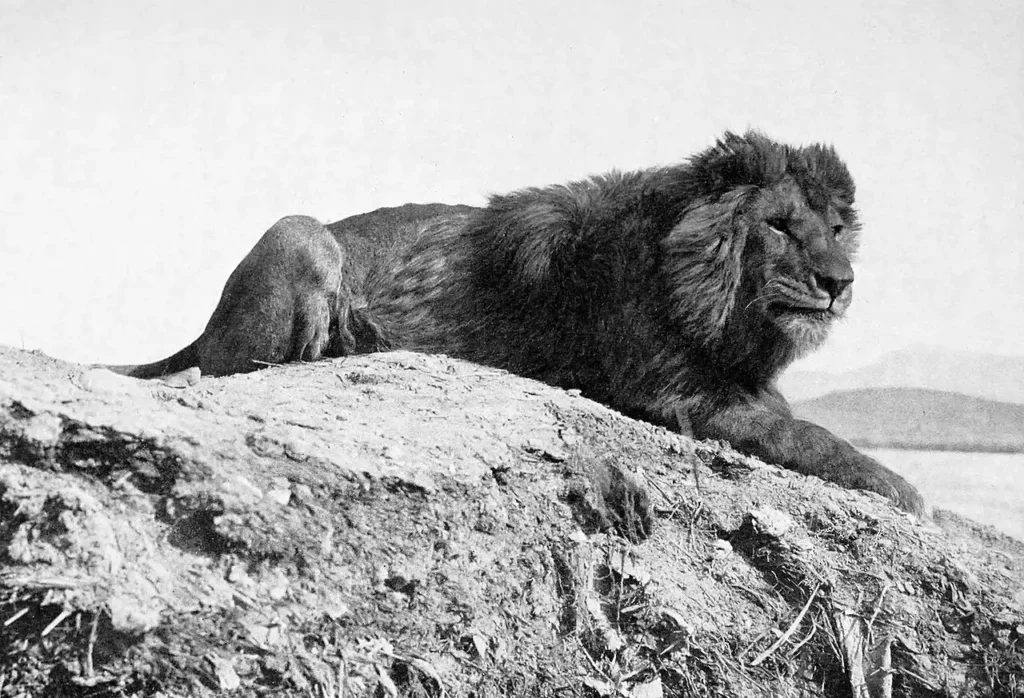
The Barbary lion (Panthera leo leo), also known as the Atlas lion, once roamed the mountains and deserts of North Africa. It was known for its impressive size and dark mane. The Barbary lion was hunted to extinction in the wild in the early 20th century due to habitat loss and hunting for sport.
However, some descendants of Barbary lions are believed to survive in captivity, and there are ongoing efforts to conserve these lions and reintroduce them to protected areas in North Africa.
46. Laysan Rail
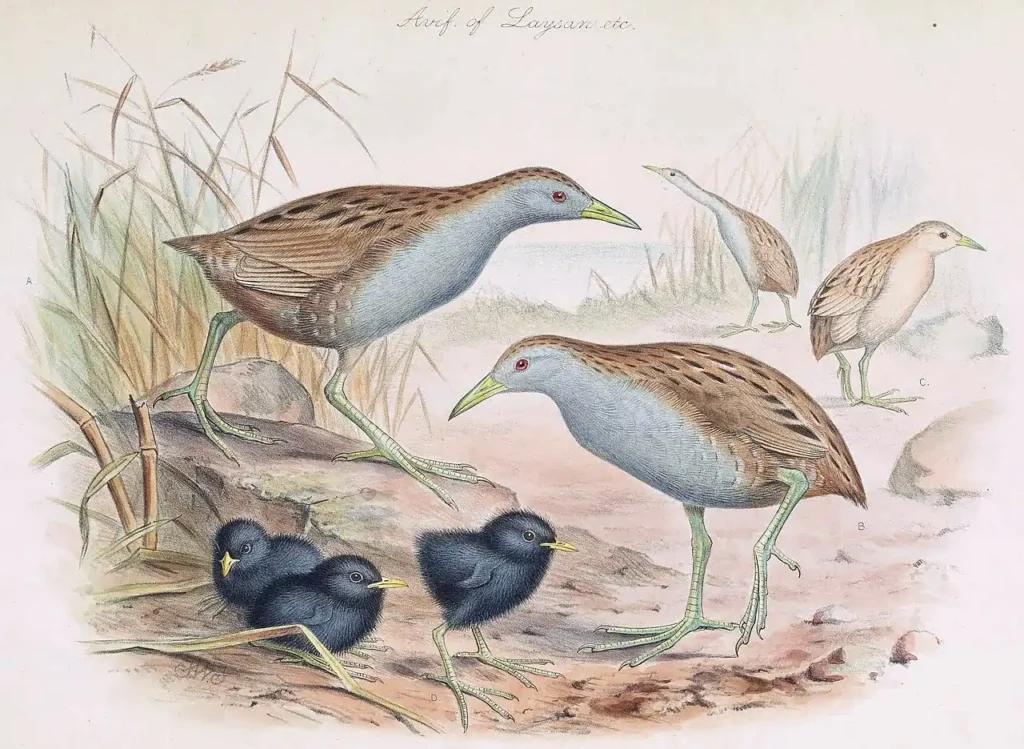
The Laysan rail (Porzana palmeri) was a small, flightless bird native to Laysan Island in the Pacific Ocean, part of the Hawaiian Islands. It thrived in the island’s dry, grassy habitats until invasive species, including rats and rabbits, were introduced in the early 20th century.
These invasive species destroyed the Laysan rail’s habitat and food sources, leading to its extinction by the 1940s. The rail was known for its distinctive call and was a key part of Laysan Island’s ecosystem before its decline.
47. Eastern Cougar
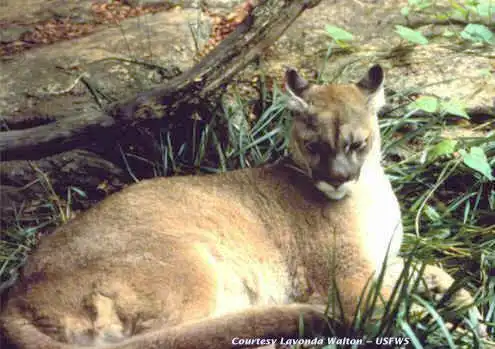
The eastern cougar (Puma concolor cougar) was a subspecies of mountain lion that once roamed the forests and mountains of eastern North America. It was declared extinct in 2011, although reports of sightings persisted for many years. The eastern cougar’s population declined due to habitat destruction, hunting, and the depletion of its primary prey, white-tailed deer.
Conservation efforts for mountain lions in the western United States have been more successful, but the eastern cougar did not recover despite similar protections.
48. Stephens Island Wren
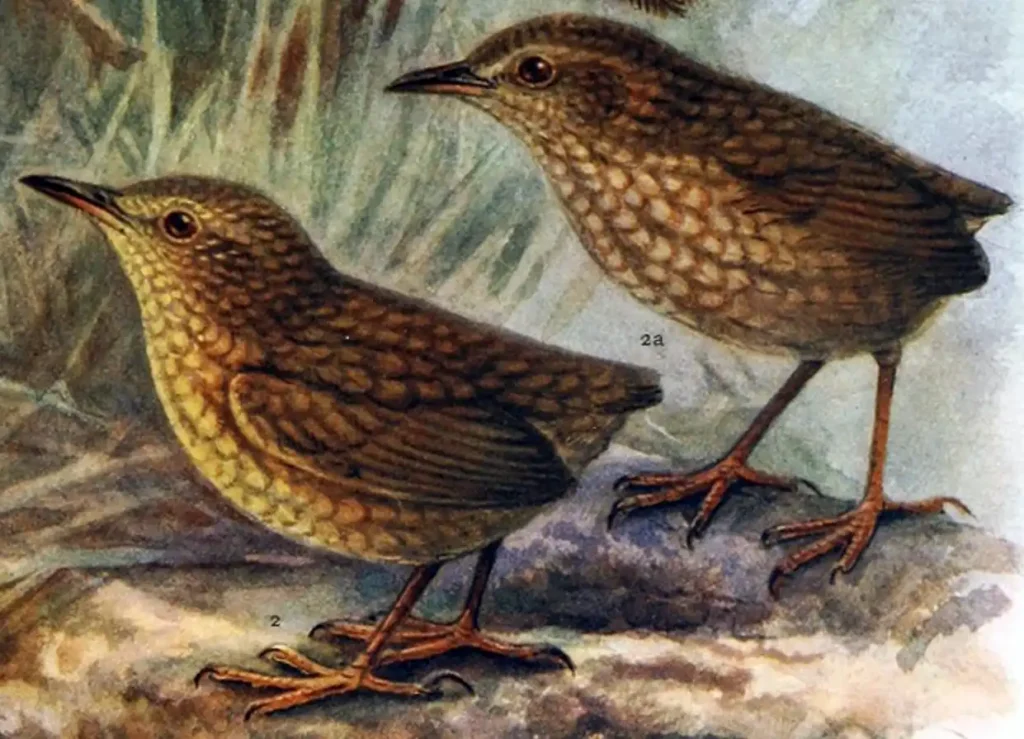
The Stephens Island wren (Traversia lyalli) was a small, flightless bird native to Stephens Island, located off the coast of New Zealand. It is often cited as one of the few species driven to extinction by a single species of predator—the domestic cat. In the late 19th century, when a lighthouse was built on the island, cats were introduced, and they quickly decimated the wren population.
The bird was declared extinct by 1895, and its extinction is a tragic example of how invasive species can wipe out vulnerable wildlife.
49. Auroch
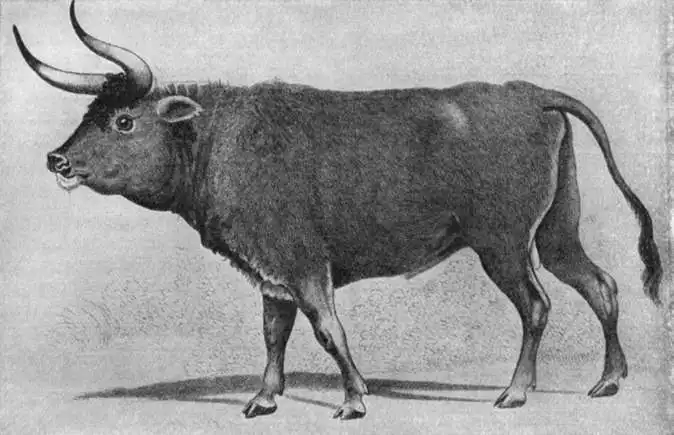
The auroch was a large species of wild cattle that once roamed the forests and plains of Europe, Asia, and North Africa. Standing over six feet tall at the shoulder and possessing long, curved horns, aurochs were powerful, formidable animals.
They played a crucial role in their ecosystems, shaping the landscape through their grazing habits. Overhunting, habitat loss, and domestication pressures led to their decline. The last known auroch died in Poland in 1627.
Despite their extinction, aurochs have inspired efforts to “breed back” a similar type of wild cattle through selective breeding of domestic cattle in an attempt to recreate the ecological impact of the original species.
50. Bramble Cay Melomys
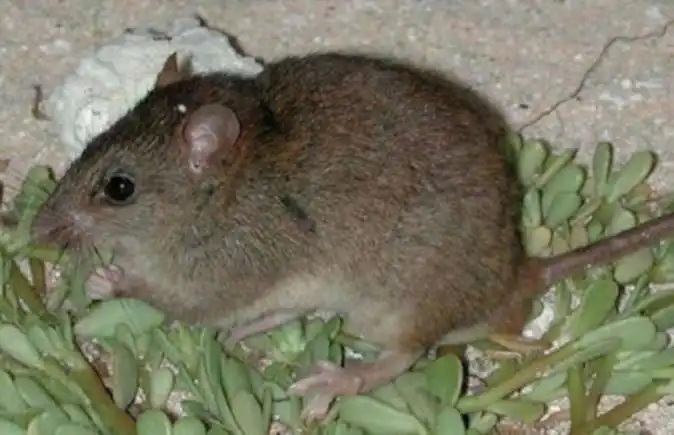
The Bramble Cay melomys, a small rodent species, was once found only on a tiny coral cay in the northernmost part of the Great Barrier Reef, Australia. This unique mammal had adapted to the harsh, isolated environment of the island, living among the vegetation on the cay and feeding on plant matter. However, rising sea levels and increasing storm surges due to climate change drastically reduced its habitat, and in 2016, the Bramble Cay melomys was declared extinct.
It became the first known mammal species to be driven to extinction directly by climate change, serving as a stark symbol of the urgent need to address global environmental challenges.
51. Caspian Tiger
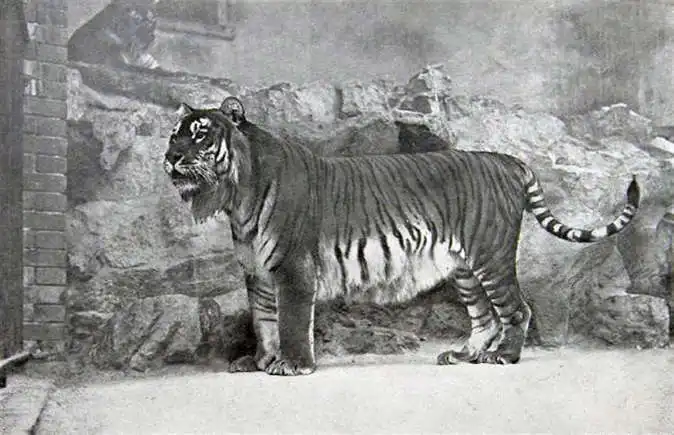
The Caspian tiger, one of the largest tiger subspecies, once roamed the forests, grasslands, and riverine areas from Turkey to the shores of the Caspian Sea and into Central Asia. These powerful predators were known for their strikingly thick, golden coats with dense black stripes.
The Caspian tiger’s decline began in the 19th century due to habitat destruction, hunting, and depletion of their prey species.
By the 1970s, the subspecies was declared extinct, with the last known individuals disappearing from the wild in the mid-20th century. Efforts are currently underway to reintroduce a related tiger subspecies, the Siberian tiger, to parts of its former range in Kazakhstan.
52. Delcourt’s Giant Gecko
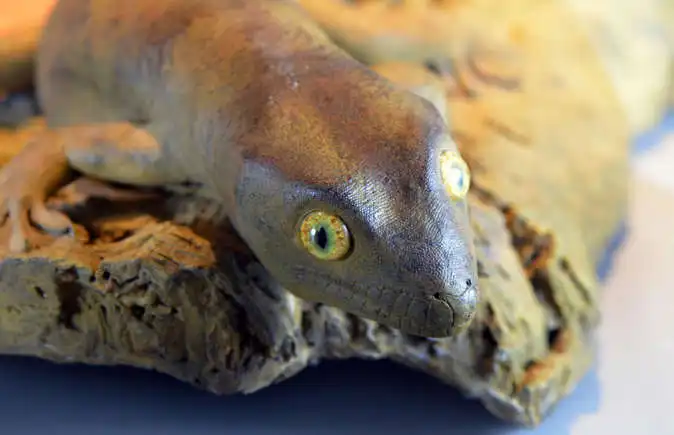
Delcourt’s giant gecko was the largest species of gecko ever recorded, reaching lengths of over 60 cm (2 feet). It was native to New Zealand, where it likely lived in forested areas, feeding on insects and possibly small vertebrates.
This elusive species was only known from a single specimen discovered in a museum collection in 1986, long after its extinction. It’s believed that the giant gecko may have fallen victim to habitat destruction and predation from introduced species such as rats and cats.
Its disappearance remains a mystery, with no recorded sightings in the wild, and it serves as a reminder of how fragile isolated island ecosystems can be.
53. Golden Toad
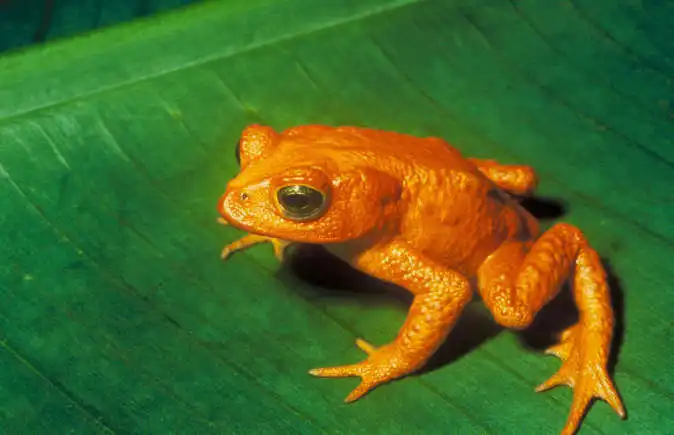
The golden toad, once native to the cloud forests of Costa Rica, was a strikingly bright amphibian, with males sporting vivid orange-yellow skin.
It was first discovered in 1966 and became a symbol of the rich biodiversity of the region. However, by the late 1980s, the species had all but disappeared. Climate change, habitat destruction, and the spread of a deadly fungal disease (chytridiomycosis) are believed to have caused the rapid decline of the species.
The last confirmed sighting of a golden toad occurred in 1989, and it was declared extinct shortly afterward. Its extinction has since become emblematic of the ongoing global amphibian crisis.
54. Javan Tiger
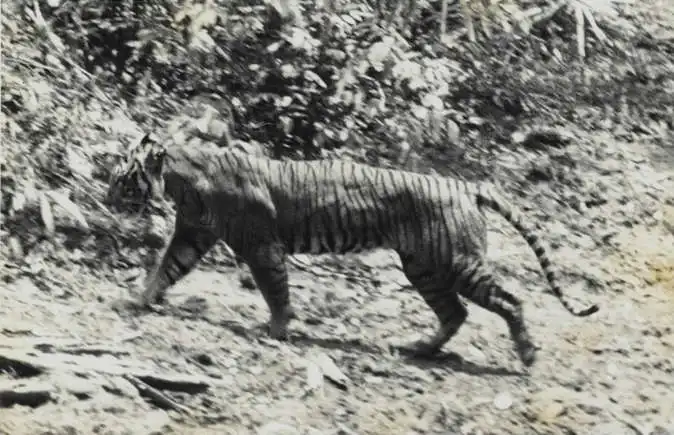
The Javan tiger was a tiger subspecies native to the Indonesian island of Java. Smaller than other tigers, it was known for its dark orange coat and dense black stripes. Once thriving in the island’s forests, the Javan tiger’s numbers began to decline in the 20th century due to deforestation, agricultural expansion, and hunting.
By the 1950s, its population had dwindled to a critical level, and despite efforts to protect the remaining individuals, the species was declared extinct in the 1970s. The extinction of the Javan tiger is a powerful reminder of the vulnerability of species confined to small, isolated habitats and the pressures of human encroachment.
55. Labrador Duck
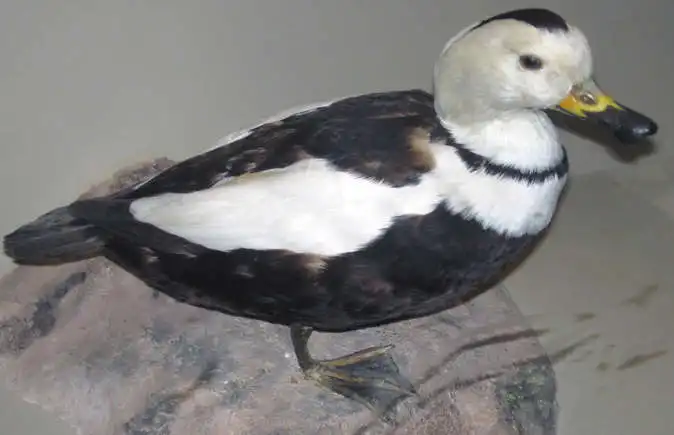
The Labrador duck was a North American sea duck that spent much of its time in the coastal waters of the Atlantic Ocean, particularly around Labrador and New England. It was unique in its appearance, with a black-and-white plumage and a distinctive, broad bill adapted for foraging on shellfish and mollusks.
Little is known about the biology of this species, and its sudden extinction remains somewhat mysterious. By the mid-19th century, the Labrador duck had vanished, with the last recorded sighting occurring in 1875. Hunting, overexploitation of its food sources, and habitat destruction may have contributed to its rapid decline.
56. Megatherium
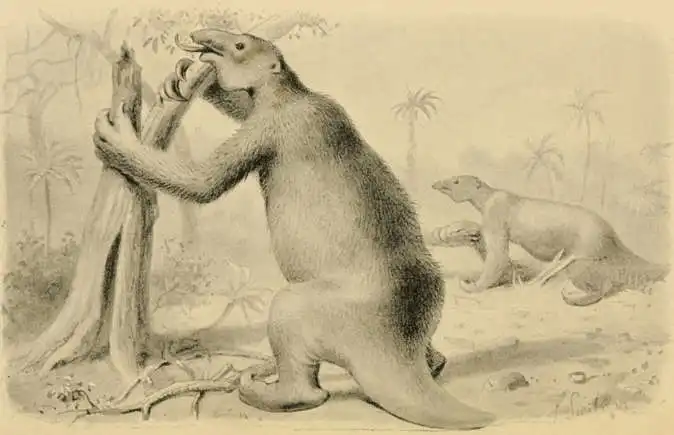
Megatherium, commonly known as the giant ground sloth, was one of the largest land mammals to have ever existed. Standing over 20 feet long and weighing several tons, this enormous creature roamed the forests and grasslands of South America during the Pleistocene epoch. Unlike modern tree-dwelling sloths, Megatherium was a ground-dweller that fed on leaves and plants.
It became extinct around 10,000 years ago, likely due to a combination of climate change at the end of the Ice Age and overhunting by early human populations. Despite its size and power, Megatherium fell victim to the same environmental pressures that led to the extinction of many other megafauna during that period.
57. Yangtze Giant Softshell Turtle
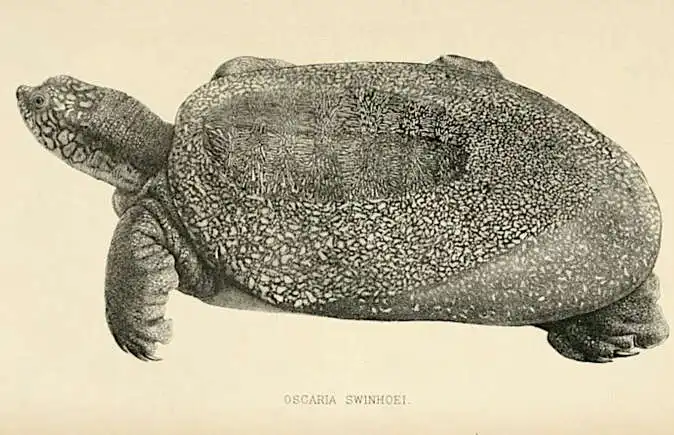
The Yangtze giant softshell turtle is one of the most critically endangered species on the planet, with only a few known individuals remaining. This massive freshwater turtle, once common in the rivers and lakes of China and Vietnam, can grow to over 200 pounds and is one of the largest freshwater turtles in the world.
Habitat destruction due to dam construction, pollution, and overharvesting for its meat and shells have decimated its population. Conservationists have made extensive efforts to breed the remaining turtles in captivity, but so far, these efforts have been unsuccessful. The Yangtze giant softshell turtle stands as a stark symbol of the urgent need for freshwater conservation efforts and wildlife protection.
You may also like:
- The World’s Largest Animal Genome Sequenced – 1 Chromosome is the Size of the Entire Human Genome
- 30 Most Beautiful Insects in the World
- 20 Weirdest Animals in the World: World’s Strangest Animals
Conclusion
The world of ancient extinct animals offers a window into the past, showing us how life on Earth has evolved through dramatic changes over millions of years. These creatures, from the massive dinosaurs to the lesser-known but equally fascinating prehistoric mammals and reptiles, played crucial roles in shaping their ecosystems. Though they are long gone, their fossilized remains tell the story of their once-vibrant existence and provide scientists with vital clues about how species adapt, thrive, and eventually vanish.
Exploring these ancient extinct animals not only sparks our imagination but also deepens our understanding of the natural world. They remind us of the impermanence of life and the forces of evolution that continue to drive the development of species today. The rise and fall of these creatures serve as a powerful lesson in the fragility of ecosystems and the importance of preserving biodiversity in the modern world.
In studying these incredible animals, we are reminded that Earth has always been a dynamic and ever-changing place. By learning from the past, we can better protect the future of our planet’s current species, ensuring that the rich diversity of life continues to thrive for generations to come.







